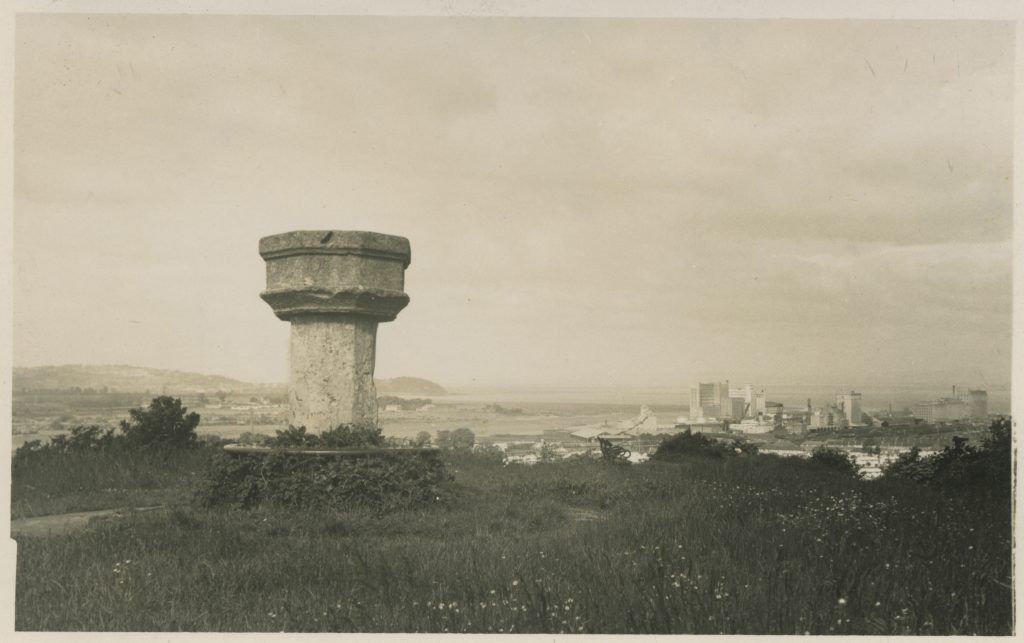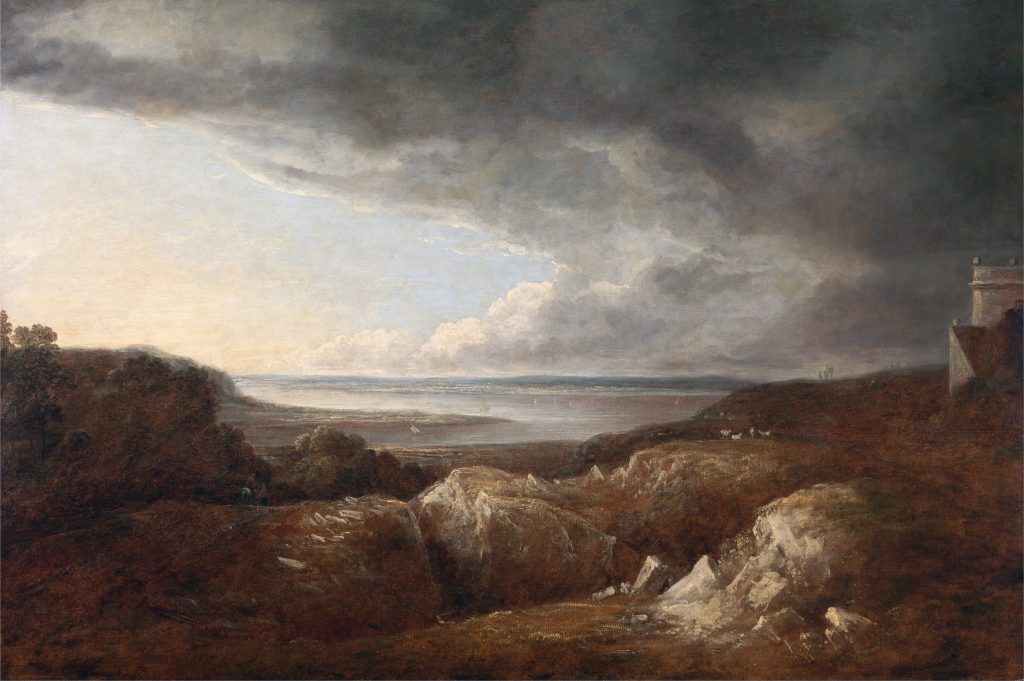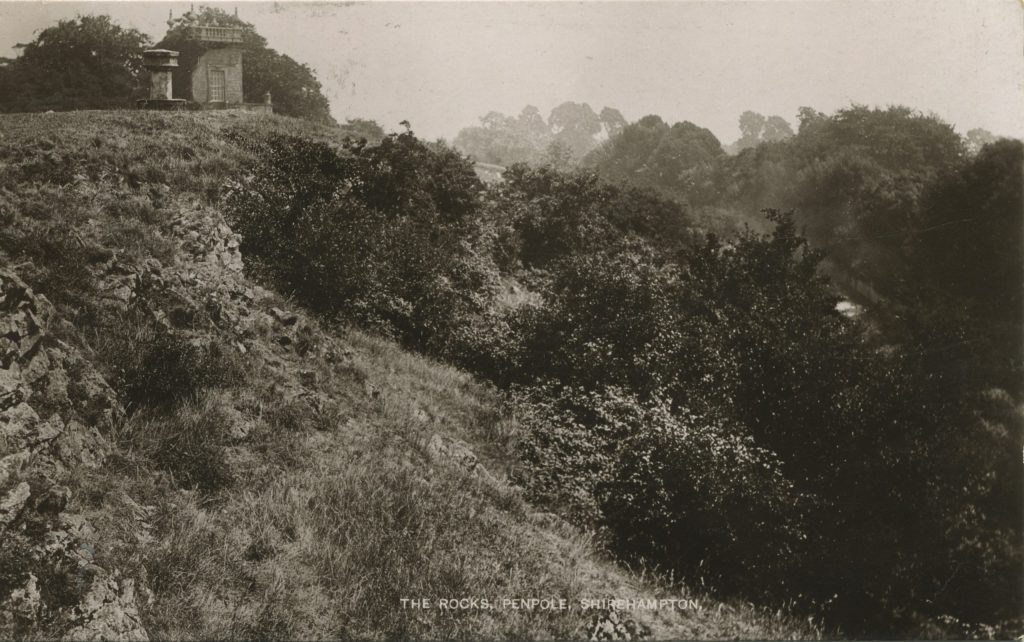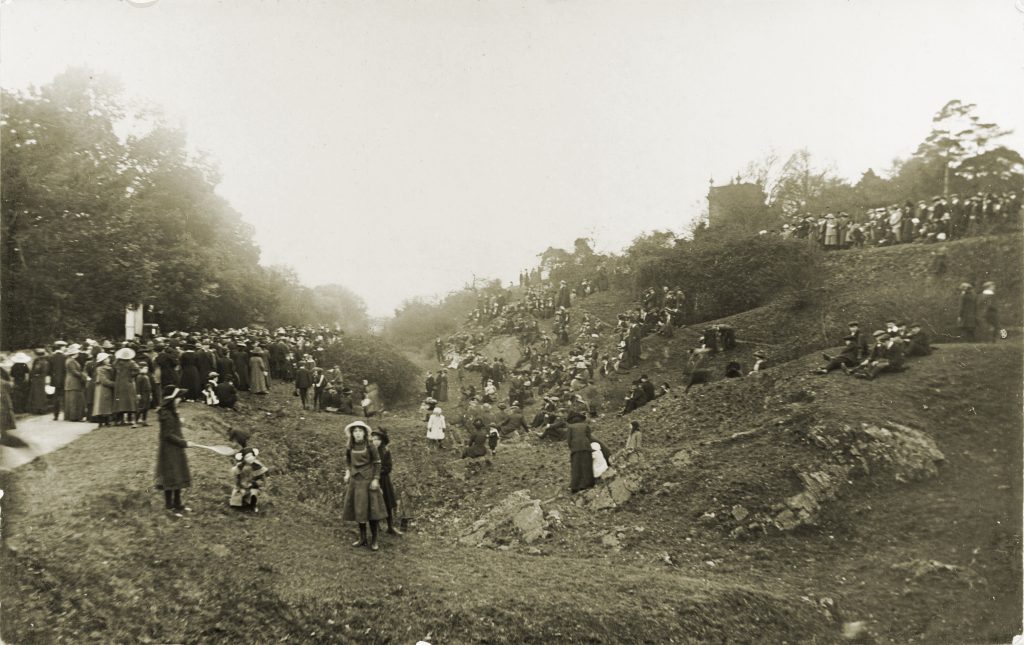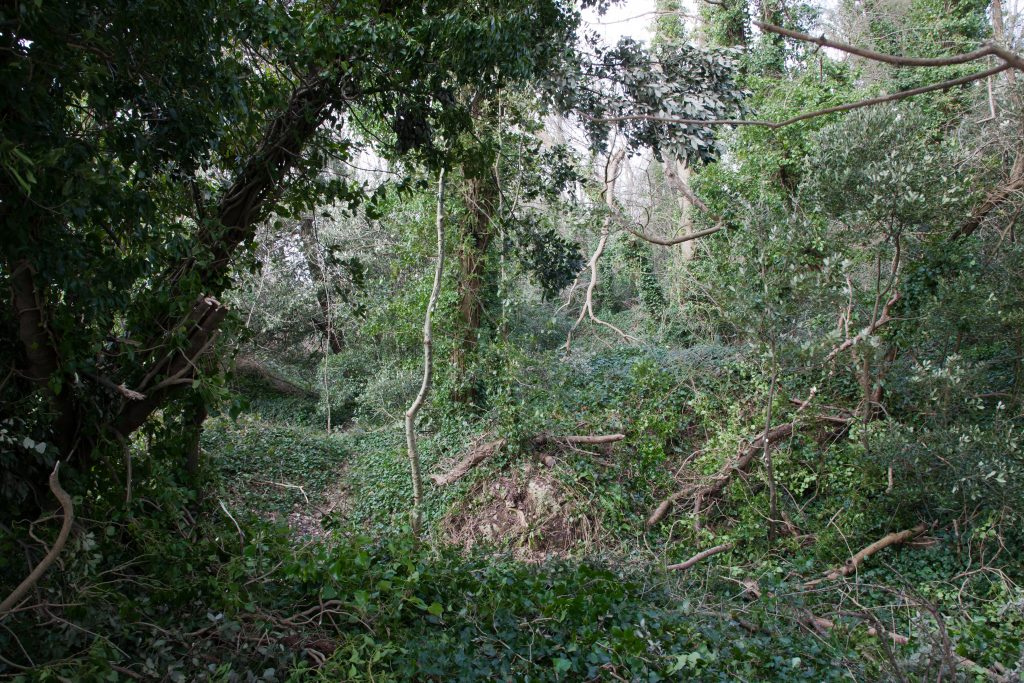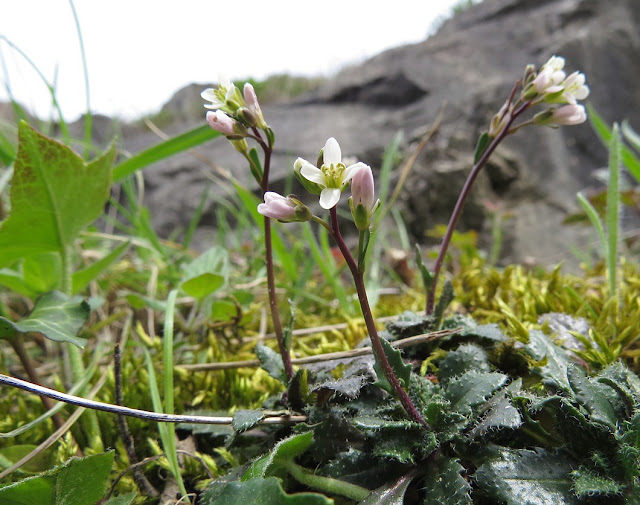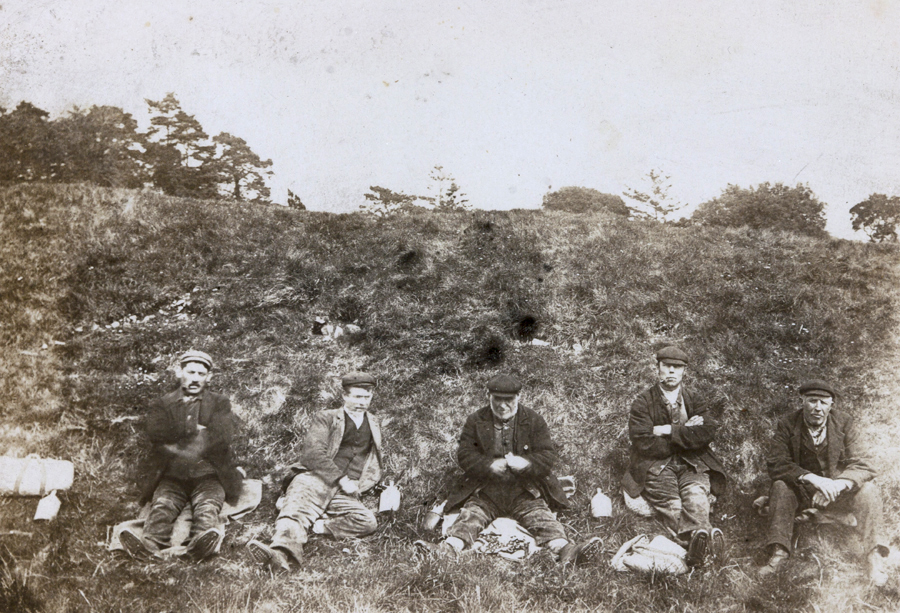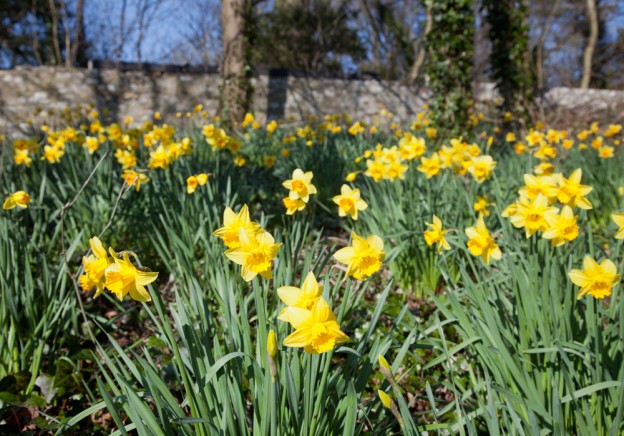A collection of interesting drawings has caught our attention this month. They were all by the hand of Maria S. Miles (1826-1897) who grew up as Maria Hill at Henbury House to the east of Kingsweston Hill. As her married name suggests, she wed a member of the Miles family, Colonel Charles Miles, for whom Kings Weston was their dynastic home. This gave her private access to the family affairs, house, and parkland, some of which are featured amongst her artistic output.
The trees of Kings Weston seem to have suffered badly from heavy storms and wind, perhaps a bad mix of exposed location and shallow soils. A few months ago we covered the damage caused by a tornado in 1859, but the park was rattled again my a terrible storm in October 1877. Using the envelope for her letter to her husband, Maria Miles illustrated the sorry scene on Shirehampton Road where whole avenues of elm trees were thrown over.

The event was reported widely in the local press:
“The full effects of the destructive fury of the gale and the havoc it made among trees can best be seen however Shirehampton Park. The whole line of noble elms on the left side of the road through the park is down. Many of these grand old trees had more than century’s growth in them, and as they lie prostrate present saddening spectacle. Their giant forms have for generations been the admiration of all lovers of well grown trees— now they are broken and torn as some malignant Aeolus had spent his last strength to wrench the favourites from the spot they adorned and fling them in heaps of ruinous wreck to wait for the prosaic attentions of the wood-cutter and the timber merchant. The owner of these fines trees is said to have remarked that he would have rather seen his house down than his trees, inasmuch as could have replaced the one but cannot restore the other, and the same kind of feeling— regret for the picturesque which has been destroyed in a single night—will be common all who have seen the extraordinary results of the storm as they are presented by the uprooted trees in Shirehampton Park. An old Cliftonian assures us that there has been no such scene as that now to be witnessed in the park during the last fifty years.”
The owner of the fine trees was Philip William Skinner Miles. Although he was the heir to the Kings Weston estate he allowed his mother, Clarissa, to continue living at the house until her death in 1868. Instead, he took up residence in Shirehampton where he fitted out Penpole House to his own specification. Maria captures her brother-in-law’s home in 1863 showing the spectacular view of the Severn enjoyed across the western lawn, and the rambling house and gardens in the foreground. Sadly, this house that once sat below Penpole Point, was demolished after WWII and is now the site of Penpole Close at the bottom of Penpole Lane.
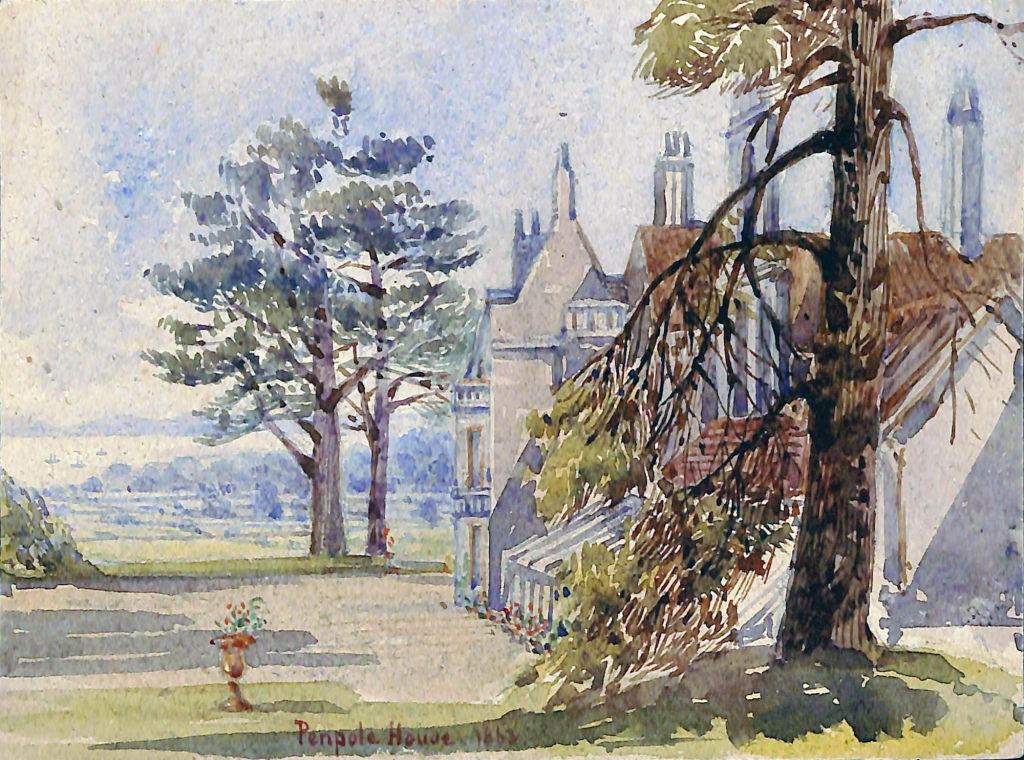
Curiously, Maria appears to have had an interest in the family’s industrial exploits too. She records the SS Great Britain and SS Great Western, two ships in which the family held interests, and paints an early view of the Bristol Port and Pier Railway from the Powder House on the Avon. The view shows the massive slice of bank that was taken out of Shirehampton Park and a short train making its way towards Shirehampton in September 1883, eight years after the line opened. The tree-lined parkland setting above was to be assaulted twice again, once by the widening of the railway, and later the building of the Portway road, cutting the estate off from the river’s edge.
The most interesting view as far as we are concerned, is one from Kings Weston house looking out towards Penpole Point and Portishead beyond. This little sketch dates from 1857 and shows the woods and tree-scattered park stretching unbroken as far as the estuary. The foreground is dominated by two lime trees, around which a rustic seat is positioned to take best advantage of the view. These lime trees survive today next to the house at the western end of the coffee shop terrace, though the bench is now a distant memory.






